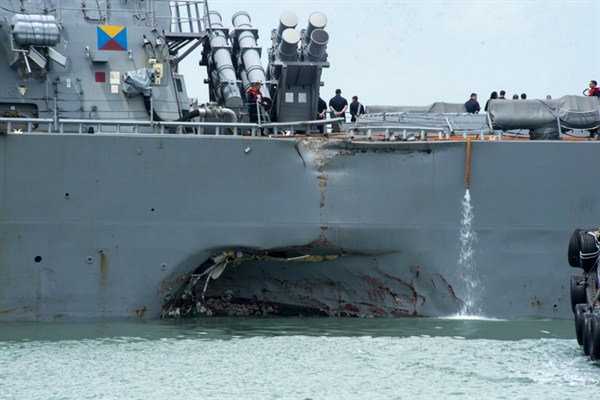Four accidents involving the U.S. surface Navy in the Pacific in recent months, two of them deadly, have led to warnings of a readiness crisis at sea. These warnings received additional salience when a Navy resupply aircraft crashed in the Philippines Sea on Nov. 22, killing three of the 11 crew and passengers. The spate of deadly incidents has led the Navy to examine how it trains, equips and sustains its force to operate ever more complex missions with a shrinking fleet. The Navy’s leadership in late October released the findings of investigations into the collisions involving the USS John S. McCain and USS Fitzgerald, as well as a comprehensive review of the incidents. This short piece assesses the state of readiness in the surface Navy, without addressing the more recent aircraft incident.
While the investigations concluded that the collisions were preventable and resulted from poor leadership and training aboard each ship, the comprehensive review, led by Adm. Philip Davidson, the head of U.S. Fleet Forces Command, sought to examine their underlying causes. The review largely confirms what a growing body of analysis had already highlighted: The operational demands placed on forward deployed naval forces have degraded the overall readiness of the U.S. fleet.
What is readiness, and why does it matter? Readiness broadly refers to the ability of the military to complete the missions asked of it, and its level of preparedness in doing so. Yet within that definition, readiness can be interpreted and analyzed broadly or narrowly, in the near or long term, and from the strategic to the operational level.

